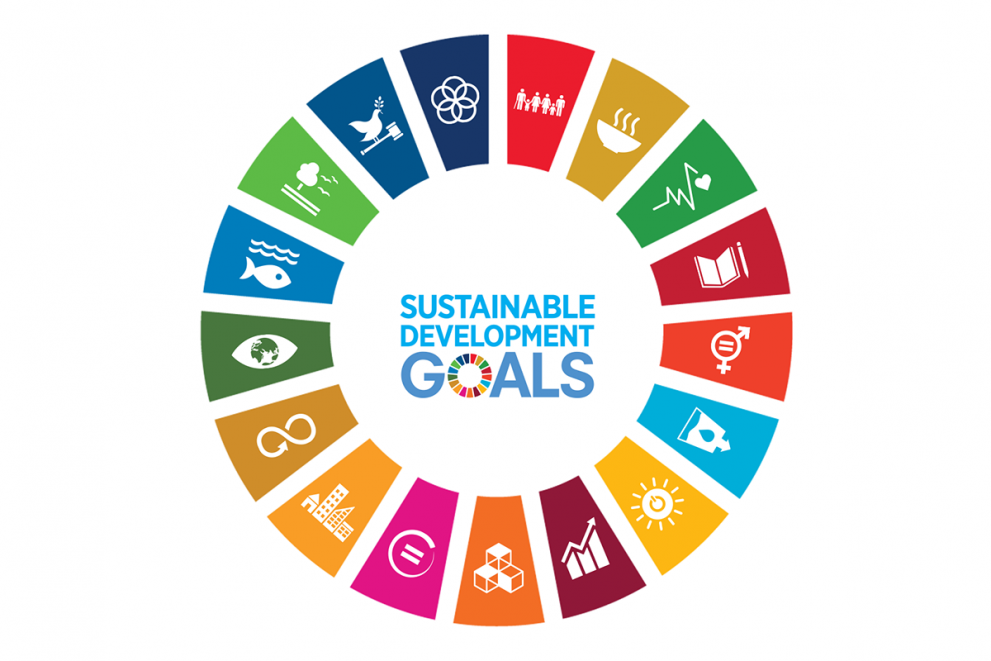SDGs for SMEs - The Importance of UN Goals for your Business

Every year large corporations, world leaders, and delegates from different countries come together to share a common goal of what constitutes better sustainable living, and the measures that can be taken at both the individual and global levels to achieve it. The initiative was started in September 2015 when 193 countries joined hands at the United Nations General Assembly to develop 17 major sustainable development goals and 169 sub-goals.
The 17 SDGs, which are aimed to be realised by 2030, are: No poverty, zero hunger; good health and well-being; quality education; gender equality; clean water and sanitation; affordable and clean energy; decent work and economic growth; industry, innovation, and infrastructure; reduced inequalities; sustainable cities and communities; responsible consumption and production; climate action; life below water; life on land; peace, justice and strong institutions; and partnerships for the goals.
SDGs are meant to protect the planet from the environmental, social, and economic problems which are plaguing our world and exerting a global impact on businesses. Now, one might ponder how the UN SDGs could be relevant to small and medium enterprises (SMEs) which have profitability and revenue generation as their main objectives? What is the correlation between SDGs and SMEs?
Well, let’s have a look at how these two are interrelated and why SDGs are important for both business and the environment.
1. Catering To The Future
With advancements in technology, the strategy of businesses is changing each day as consumer behaviours adapt to the modern world. Evermore, people are looking for businesses thriving on innovation that will not only be profitable, but in being so will also create a more safe and sustainable environment. As threats of global warming loom at large, many corporations are adapting SDGs in their overall business strategies to cater to their clients and customers.
This, in a way, is helping SMEs integrate SDGs along with creating more sustainable products and new types of solutions for business needs. According to a report by Business and Sustainable Development, it was revealed that, globally, sustainable business models related to SDGs could open economic opportunities worth up to US$12 trillion and increase employment by up to 380 million jobs by 2030.
2. Employer Attractiveness
In our previous article on attracting youth to ESG investments, it was mentioned that the focus of the youth has drastically changed and that companies need to cater to their mindset by providing them with the option of a flexible working environment and by prioritising their health concerns.
The same rule applies here. In order to attract and retain a young and talented workforce, SMEs and business leaders alike need to make SDGs a priority, since younger people are now more interested in knowing how an enterprise is handling its corporate social responsibility and whether they are taking serious action at achieving sustainability goals. This helps them stand out as an employer, and candidates are more likely to join them as it creates a positive image of the company that helps gain the trust of both employees and stakeholders.
3. Make SDGs A Top Priority
Many large organisations have a separate CSR team and can afford to make SDGs a priority, when compared to SMEsthat have just started out and are more concerned with immediate or short-term profitability. However, businesses, whether large or a small, need to understand that SDGs are not an individual or a specific company criterion, but a global agenda.
Consumers, employers, and shareholders expect the same level of determination and commitment toward sustainable development goals and, increasingly, prefer to proceed with business deals that fundamentally consider sustainability. SMEs can work with their agility in this respect, pivoting to change their outlook toward SDGs when compared to less flexible, larger organisations.
4. Job Creation
With rising unemployment, SMEs can help in the creation of job opportunities for marginalised sectors of society, notable for women and youth. As a result, SMEs are automatically helping to reduce poverty and hunger by providing better education and health prospects for workers, which are some of the goals of sustainable development.
An employment strategy that revolves around reaching talent in ‘traditionally’ underserved demographics can, in turn, provide a strong element of identity and brand for a company, particularly attractive to younger investors.
5. Shared Common Goal
By integrating SDGs, SMEs and large organisations alike can create shared value for all stakeholders, and businesses can therefore be driven by a commonly shared vision of success. When organisations work to create a better world to live in, and focus on value creation, this will automatically help, further down the line, in compounding profits via the creation of sustainable value.
SDGs can help companies to define their identity, purpose and brand, and be taken as opportunities to enhance business growth while addressing sustainability goals that can be marketed as part of the company’s value proposition for private sector investment potential.
Outlook
For SMEs working towards either single or multiple SDGs, it may seem more than challenging to continue when roadblocks occur and short-term performance is affected. However, the fact is that SMEs can, due to their earlier-stage growth and size, be more opportunistic and therefore flexible when it comes to adopting new strategy.
Indeed, the Organisation for Economic Co-operation and Development (OECD) notes that: “most breakthrough innovations in recent decades have come from new and small firms because, contrary to large enterprises, they can work outside dominant paradigms”.
Take a look at the UN SDGs and contact your local business advice bureau or governmental department to see how they may be actionable for your business. Consider how working towards an ESG rating for your company could provide a target for SDG adoption, or which ESG courses or events are available in your area or online for improvement in your company SDG skillset.
Follow our Featured Articles for more ESG insight.

